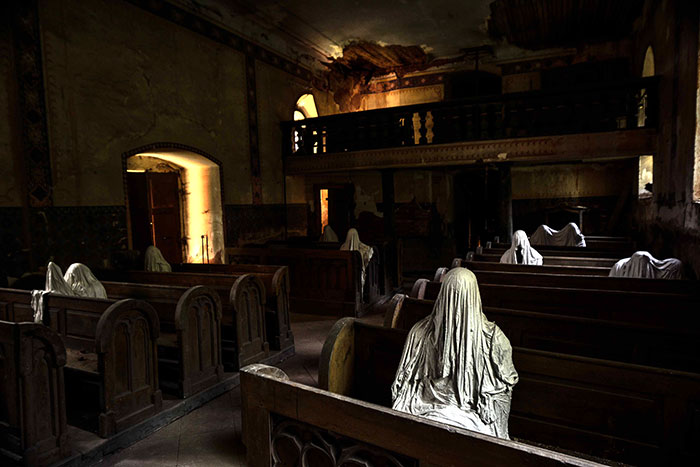One of the most popular monuments in Evora, Portugal is a small interior chapel called the Capela dos Ossos which translates as “the Chapel of Bones.” Located next to the Church of St. Francis, the chapel is so called because of its interior walls adorned with human bones and skulls.
It was built in the 16th Century by a Franciscan monk who wanted to send the message of life being transitory, a common theme summed up in the memento mori architecture.
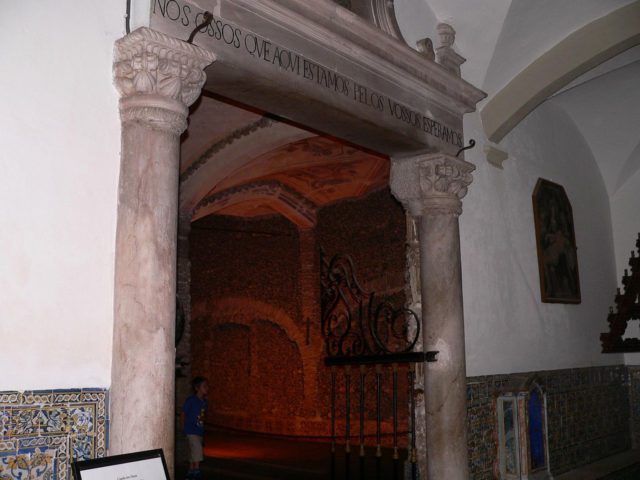
The Franciscan monk, inspired by the Counter-Reformation spirit of that era, wanted to provoke his fellow brothers into contemplation of this message. At the entrance in the Capela dos Ossos, a warning sign salutes the visitors, reading: “We bones that here are, for yours await.”
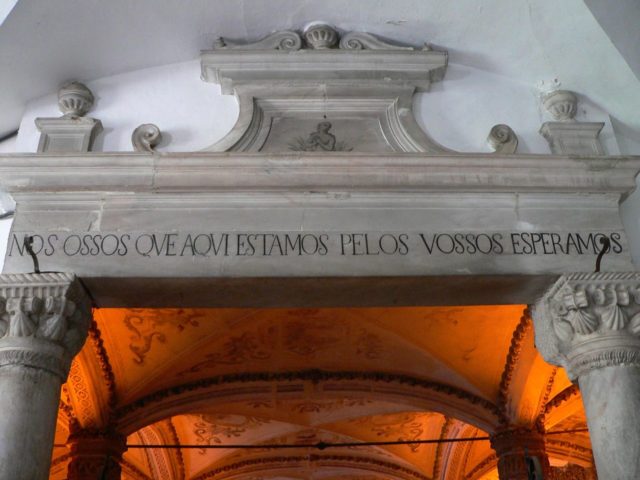
Formed by three spans 8.7 meters long and 11 meters wide, the light enters the Chapel of Bones through three small openings on the left. The eight pillars and walls are meticulously adorned with humans bones and skulls held together by cement.
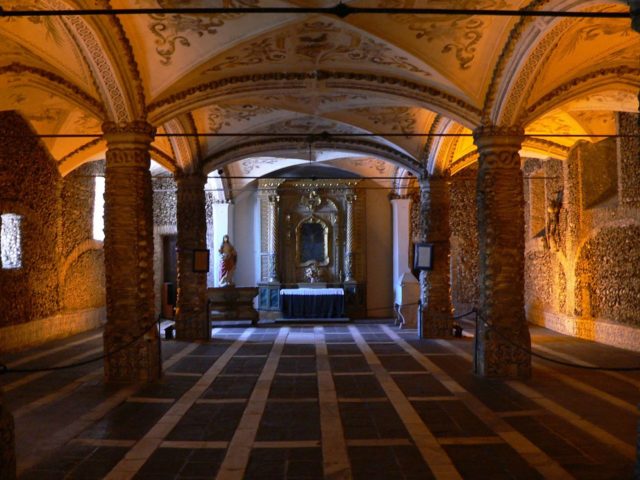
As a final touch in the already eerie interior, the whte painted brick ceiling is decorated with death motifs.
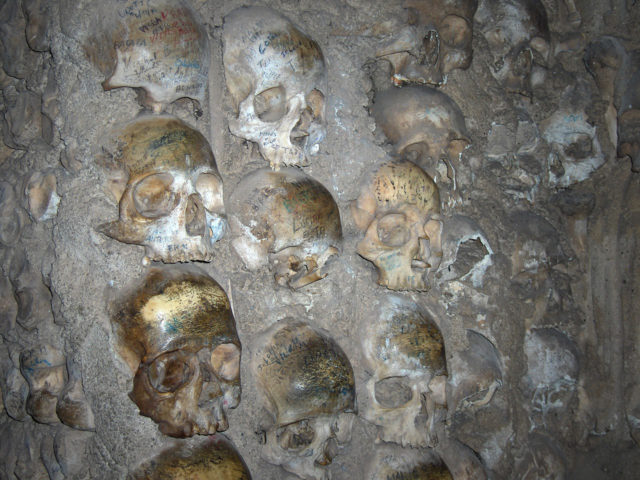
There around 5,000 human skeletons and bones; they mainly belong to deceased monks, coming from the cemeteries of various churches. Many of the skulls in the chapel are scribbled with graffiti, having been defaced by vandalism.
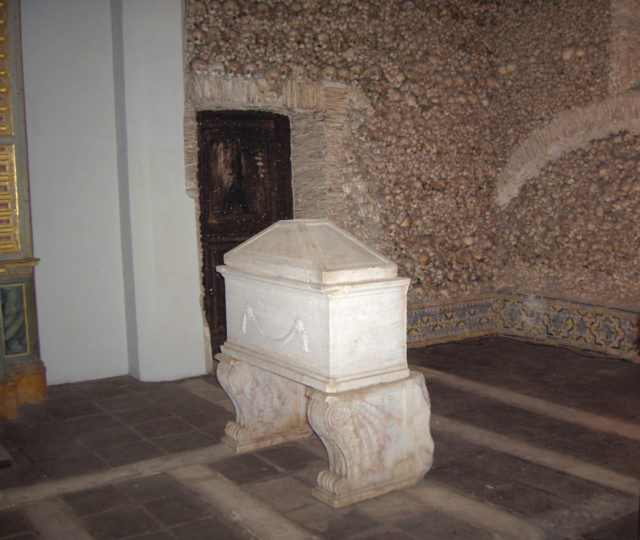
The spookiest detail in the chapel, is a child corpse, dangling from ropes. On the roof of the chapel, a quote from the Vulgate bible is inscribed: “Melior est die mortis die nativitatis” (Better is the day of death than the day of birth, Ecclesiastes, 7, 1).
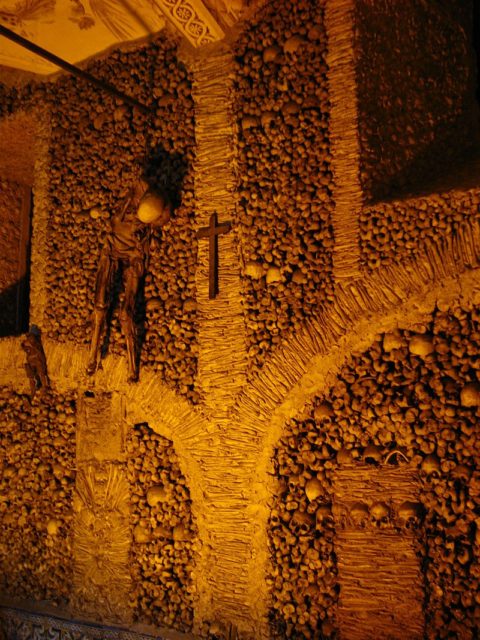
On one of the pillars in an old wooden frame, there is a poem written about the need to reflect on one’s existence.
Where are you going in such a hurry traveler?
Stop … do not proceed;
You have no greater concern,
Than this one: that on which you focus your sight.
Recall how many have passed from this world,
Reflect on your similar end,
There is good reason to reflect
If only all did the same.
Ponder, you so influenced by fate,
Among the many concerns of the world,
So little do you reflect on death;
If by chance you glance at this place,
Stop … for the sake of your journey,
The more you pause, the further on your journey you will be.
by Fr. António da Ascenção (translation by Fr. Carlos A. Martins, CC)
